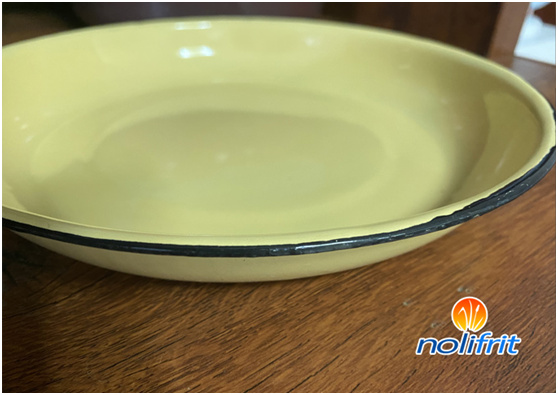How To Hemming And Rack For Enamel Cookware
How to enamel the edge of enamel cookware?
The process in which the powder edge of the enamel casting is attached to the hemming plate, belt or wheel to make it evenly coated with a layer of edge enamel slurry is generally called hemming. It can be done mechanically or manually. The hemming is required to be neat and even, and the enamel edge enamel covers the cover coat between 0.5 and 1 mm; at the same time, defects such as lace, bumps, and disjoint are not allowed.

Different enamel cookware products have different hemming methods. The specific operation requirements and characteristics are as follows:
|
Hemming Method |
Applicable Products |
Contact Angle |
Operating Requirements |
Features
|
|
Hemming groove board |
Enamel pots, enamel plates and dishes |
80~90 |
Stir the edge enamel frequently, pour the hemming board frequently, do not roll the edge on the traces of hemming |
the edge is uniform, and the bottom edge of the edge is not easy to roll |
|
Hemming flat board |
Enamel buckets, enamel cups, enamel pots |
70~85 |
Same as above |
Same as above |
|
Hemming wheel |
Enamel pots, enamel plates, enamel dishes |
45~50 |
Stir frequently and add enamel slurry |
Thin edge, thick bottom edge |
|
Mechanical hemming |
Enamel pots, enamel plates, and enamel dishes |
55~60 |
Frequently add edge enamel slurry, and often adjust the volume and consistency of edge enamel slurry |
Same as above |
|
Mechanical hemming |
Enamel cups, enamel pots |
90 |
Same as above |
The edges are even, and the bottom edge is not easy to roll |
The operation of placing the rolled enamel powder on the firing rack is called a swing rack. Swing frame requirements: pick and place the powder blanks to be light, stable, flat and accurate, and avoid damaging the edge enamel and bumping the powder blanks. The swing frame should be straight to avoid defects such as overturning, deformation and top pit.